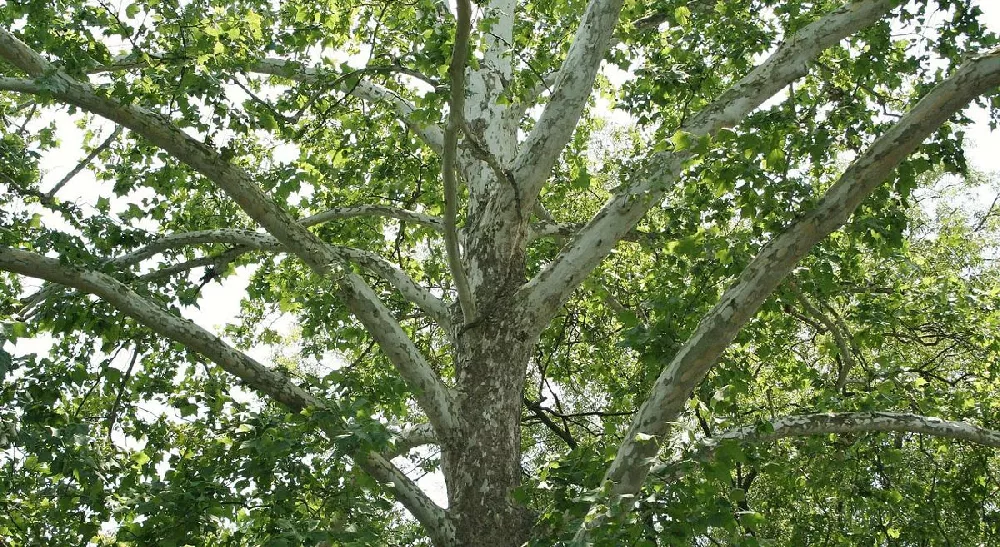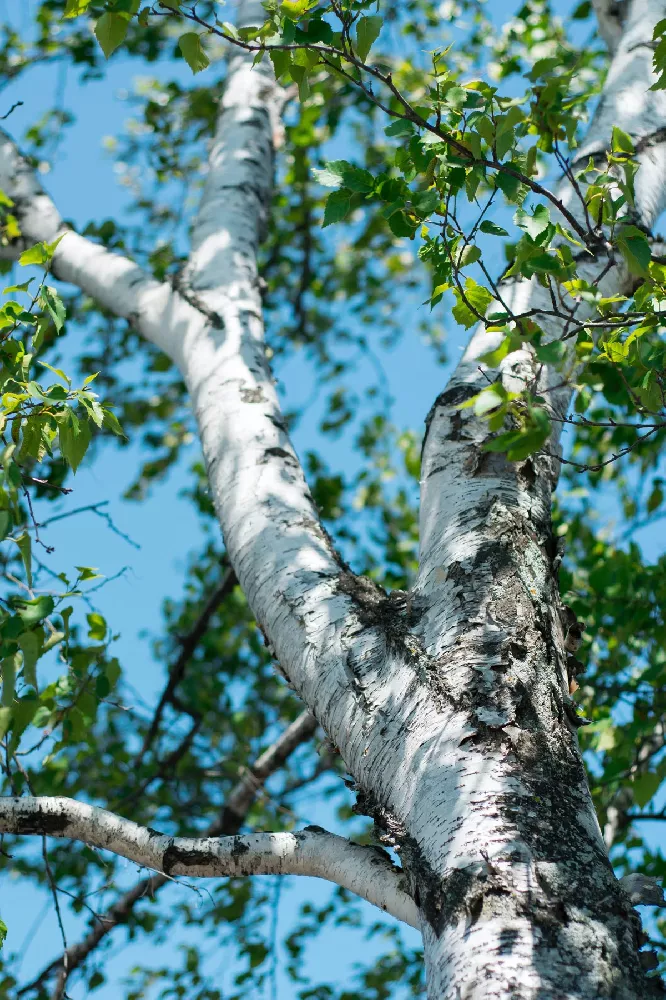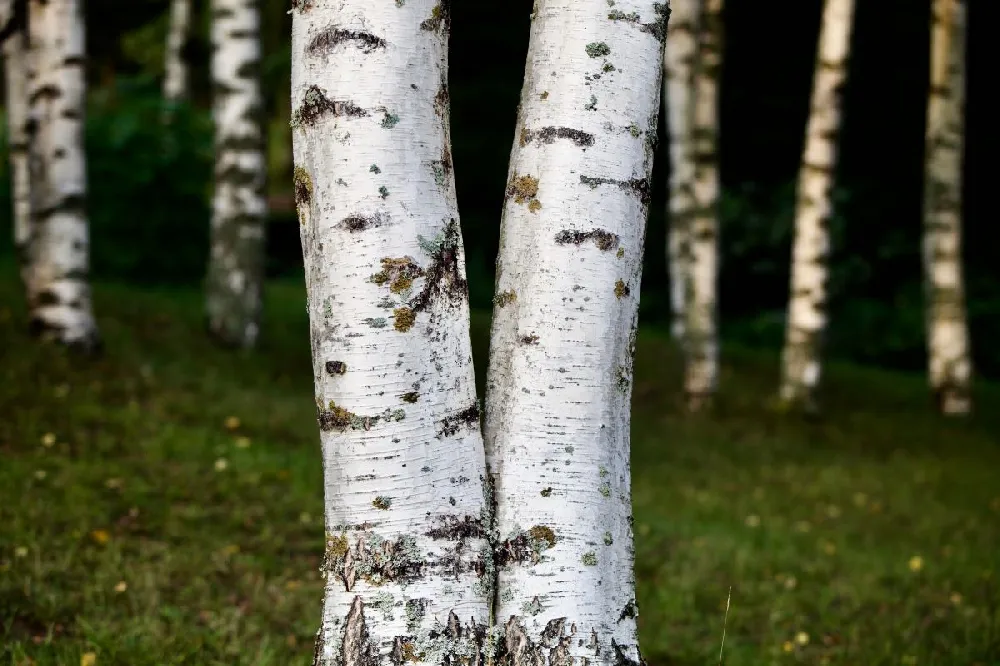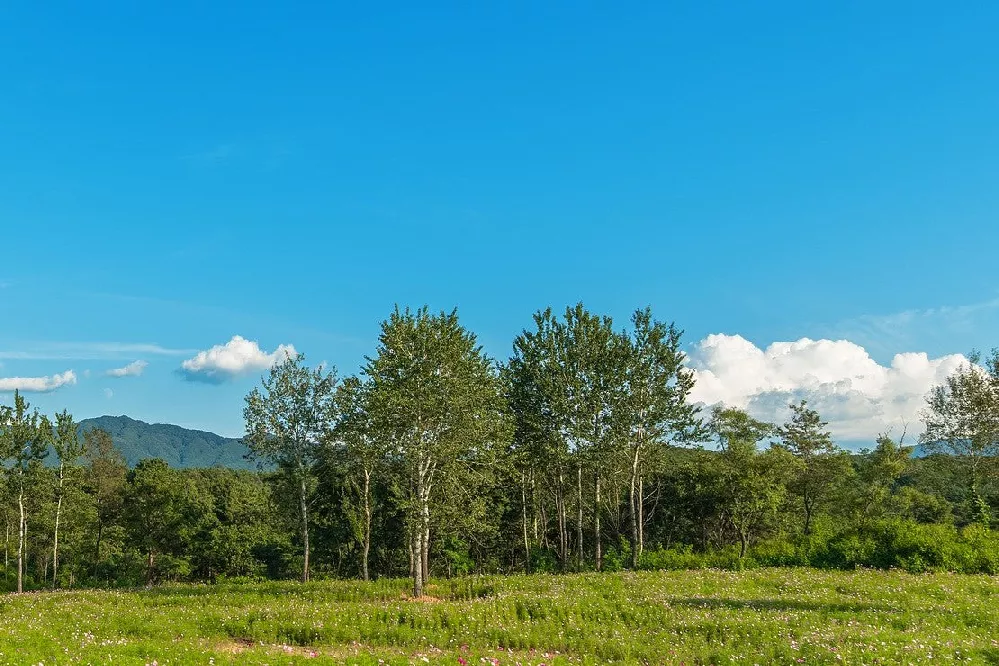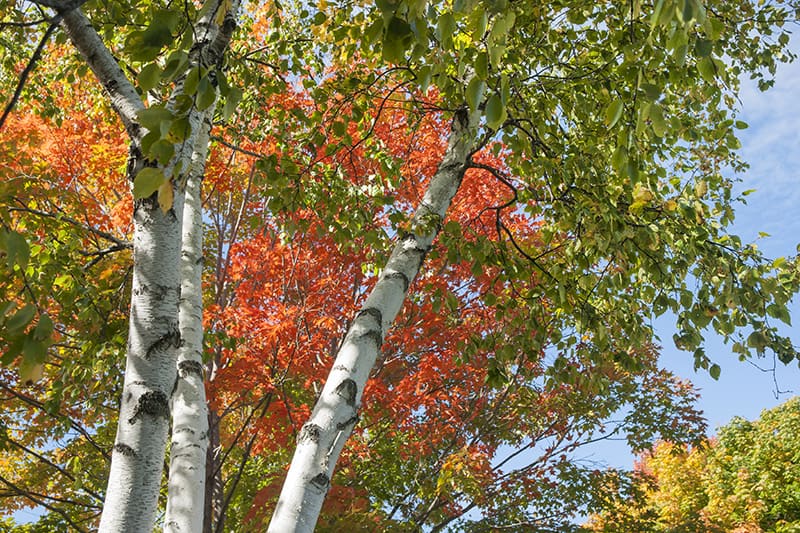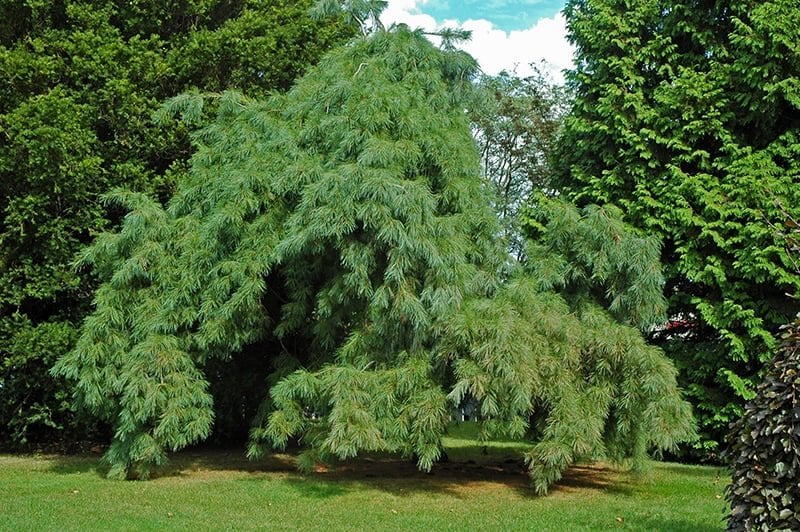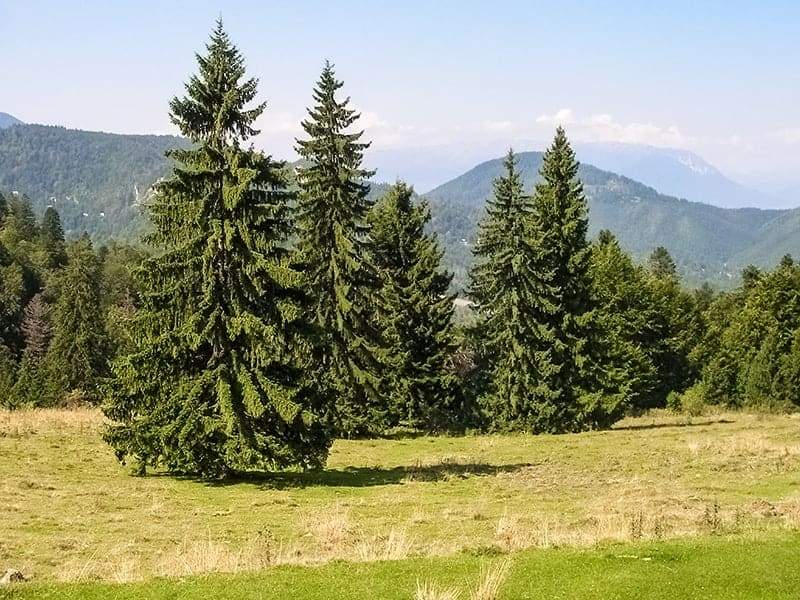- Home >
- White Bark Trees
White Bark Trees for Sale - Buying & Growing Guide
Filters
Price Range
Growing Zones
Plant Type
Sunlight
Mature Height
Plant Characteristics
6 Results
Trees with white bark add an extra dimension of interest to a garden and remain visually compelling even if the tree is deciduous and, therefore, bare throughout winter.
These are some of the best and most popular white bark trees – each will come with facts, care guide, and photos.
1. Candlebark
Scientific Name: Eucalyptus rubida
USDA Hardiness Zone: 7-10
Mature Size: Up to 100 feet tall
Light: Full sun
Water: Average moisture needs
Soil: Well-draining
This evergreen tree is native to Tasmania and south-eastern Australia. It is a medium to large-sized tree that typically grows in the region of 30 to 100 feet tall, but it has been known to reach heights of 130 feet. It is also commonly known as ‘ribbon gum’ or ‘white gum,’ which is a reference to the coloring of its bark. The bark of the tree is smooth and white-gray, and it peels away in long ribbons to reveal red or cinnamon-colored bark beneath. This is a stunning ornamental tree that has an interesting architectural shape. It is also popularly used as a privacy screen or windbreak.
The foliage of this tree is sweetly aromatic, especially when young. The foliage is blue-gray at first but develops to a darker blue-green when mature. The flowers of the tree appear during summer, in fluffy clusters of white blooms. These flowers are especially attractive to bees and are popularly used in the production of honey. They also work well in floral arrangements, alongside the young foliage stems.
This tree thrives in full sun exposure and is drought tolerant. It fares best in average or fertile soils, but it is highly adaptable to almost any soil that drains well. This tree is also tolerant of harsh winters, being able to survive through frost and snow.
2. White Poplar
Scientific Name: Populus alba
USDA Hardiness Zone: 4-9
Mature Size: Up to 80 feet tall
Light: Full sun
Water: Average to high moisture needs
Soil: Well-draining, fertile
This deciduous tree is native to central Asia and parts of Europe, including Spain, Morocco, and Germany. It also goes by the common name of ‘silver poplar.’ The tree is medium-sized, generally growing to between 50 and 80 feet tall, though in some instances, it can reach up to 100 feet in height. The bark of the tree is where the white poplar gets its common name, with smooth white bark that has dark, diamond-shaped markings on it when young. As the tree ages, the bark develops to a slightly darker silver shade.
The foliage of this tree is very attractive, with heavily lobed leaves that are shimmery green on the surface and white and fuzzy underneath. The crown of the tree is typically quite broad, making it useful as a windbreak but also adding to its ornamental beauty. As a deciduous tree, the branches are bare in spring when the catkins arrive. Female catkins develop into capsules that burst open to reveal fluffy seeds that resemble wooly clouds. This tree has a rapid growth habit, which makes it useful for quickly creating height or privacy in a garden. However, the wood is known to be brittle and can break easily in high winds.
White poplars spread via suckers, and they can do so quite aggressively. This has led to them becoming regarded as invasive in many states in the US, and the tree has now been banned from being planted in Connecticut. The extensive roots of this tree also make it a hazard when planted close to drains or underground foundations, as they can cause damage, so take care to grow it away from any structures.
This tree grows best in full sun and enjoys soils that are fertile and consistently moist. It will also adapt to other types of well-draining soils. In its native environment, white poplars are commonly found growing alongside streams and on riverbanks where the soil is naturally fertile and moist.
3. Himalayan Birch
Scientific Name: Betula utilis
USDA Hardiness Zone: 3-8
Mature Size: Up to 70 feet tall
Light: Full sun to partial shade
Water: Average to high moisture needs
Soil: Adaptable to most soil types
This is a deciduous tree that is native to China. It grows in the western Himalayas as both shrubs and trees to form forests. The foliage of the tree appears in spring, in shiny deep green, and later develops to yellow and orange before dropping in the fall. Blooms also emerge in spring as tiny flowers on long catkins. The bark of the tree is very ornamental, appearing in a copper-bronze shade that peels off in large sheets to reveal creamy smooth bark underneath.
The shedding of the bark happens on both the branches and the trunk. In ancient cultures, the peeled bark was used as paper to write Sanskrit scriptures on, and in some instances, is still used today for the writing of ancient mantras. The bark is also commonly used as packaging for food items, and the wood of the tree is used in construction. The tree is also used for firewood, and many of the native forests are struggling due to the overuse of the tree for this purpose. As a result, conservation efforts are being made to protect Himalayan birch trees.
The tree thrives in full sun or partial shade and will adapt to a wide range of soil types. It prefers moist or wet soils and can survive even in clay or waterlogged conditions. In its native habitat, it relies on moisture produced from melted snow.
4. Paper Birch
Scientific Name: Betula papyrifera
USDA Hardiness Zone: 2-7
Mature Size: Up to 70 feet
Light: Full sun to partial shade
Water: Average to high moisture needs
Soil: Well-draining
This deciduous tree is native to North America and is also commonly known as ‘canoe birch’ and ‘American white birch.’ It is fast-growing but relatively short-lived, with a life expectancy in the region of 30 years. The bark of this tree is especially attractive in an almost shimmering shade of white. The bark peels away in strips to reveal copper bark underneath.
As the tree ages, the white bark becomes marked with black patches. Native Americans used the bark to make lightweight canoes, which is where the common name of ‘canoe birch’ is derived from. The bark was also used in ancient times to write messages as a means of communication. This is a popular landscape tree, which has a rounded habit and produces dark green foliage that becomes bright yellow during fall. Female trees produce green, upright catkins in spring, while male trees produce yellow catkins that droop downwards.
Paper birch is the official state tree of New Hampshire and can be commonly seen throughout New England. It is loved for its decorative bark and stunning fall color. It thrives in full sun or partial shade and will adapt to a wide range of soil conditions.
This is a low-maintenance tree that does not need regular pruning, and it can be propagated from cuttings. The tree is not tolerant of drought and needs to be in soil that is kept consistently moist.
5. American Sycamore
Scientific Name: Platanus occidentalis
USDA Hardiness Zone: 4-9
Mature Size: Up to 130 feet tall
Light: Full sun
Water: Average to high moisture needs
Soil: Well-draining, fertile
This deciduous tree is native to North America, growing in the central and eastern United States, some southern provinces in Canada, and parts of Mexico. In North America, it can simply be referred to as ‘sycamore,’ but outside of this continent, it is known as the ‘American sycamore.’ Other common names for this tree include ‘plane tree,’ ‘buttonwood,’ ‘water beech,’ and ‘occidental plane.’
This tree has a rapid rate of growth, growing to eventual heights of between 70 and 130 feet, though in rare instances, the height of an American sycamore can exceed 160 feet. These trees typically have huge, rounded crowns, which make them most popular for use as shade.
The foliage of these trees is shaped like maple, emerging in various shades of green before warming up to yellow and brown in the fall. Clusters of flowers appear in spring, which is small and of no particular interest. The bark of this tree is one of its most striking features. It is smooth and silver-gray and peels away to reveal large patches of creamy-white bark underneath.
Sadly, this tree is quite susceptible to anthracnose, a type of canker, which rarely kills the tree completely but more typically leads to defoliation. As a result, this tree is not as popularly planted in public spaces as it once was, and more disease-resistant trees are favored. This tree should be grown in a position of full sun. It enjoys fertile soils but will adapt well to most soil types that are kept moist. It is best suited to wet or moist sites, and if kept in dry conditions, will have a considerably shorter life expectancy.
6. Lemon-Scented Gum
Scientific Name: Corymbia citriodora
USDA Hardiness Zone: 8-11
Mature Size: Up to 130 feet tall
Light: Full sun
Water: Average moisture
Soil: Well-draining
This evergreen tree is native only to a northeastern portion of Australia but has also been naturalized in western Australia. It is a tall and narrow tree, typically growing to heights of between 80 and 130 feet. The foliage of this tree is lance-shaped, and each leaf measures between three and seven inches long. Foliage is heavily-scented of lemon, and these leaves are used to produce the essential oil citronella, which is most commonly utilized as an insect repellant in sprays, lotions, and candles.
The fresh, glossy green of the foliage is striking against the creamy white bark of the tree. The smooth bark can sometimes be tinted with flushes of pale pink or blue and flakes away in small pieces. Small clusters of white flowers appear in spring amongst the foliage, which adds an extra dimension of interest. This is a stunning ornamental tree, which grows best in full sun. It thrives in well-draining soils of medium moisture, but it can also tolerate periods of drought.
7. Japanese White Birch
Scientific Name: Betula platyphylla
USDA Hardiness Zone: 4-7
Mature Size: Up to 50 feet tall
Light: Full sun to partial shade
Water: Average moisture needs
Soil: Well-draining
This deciduous tree is native to Japan, Siberia, China, and Korea. It is also commonly known as the ‘Siberian white birch’ and the ‘Asian, white birch.’ It is a medium-sized tree with a pyramidal habit. It has an ornamental quality that makes it well suited for use as a specimen tree. The bark of the tree is probably its most outstanding feature, which is smooth and pure white, with peeling horizontal stripes that reveal tan beneath.
The branches of this tree are long and slender, with a spreading and sometimes drooping habit. Lime green-colored foliage arrives in spring, which is ovate with toothed margins. Around the same time, male trees will produce pendulous brown-yellow catkins, and female trees produce green catkins that stand upright like candles. Female flowers will develop into cones that contain seed pods with wings. In fall, the foliage fades to yellow before dropping to the ground. The tree remains attractive all year round, thanks to its exquisite bark and interesting silhouette.
It is a low-maintenance tree, requiring little to no pruning, and performs especially well in cool northern climates. It thrives in full sun or partial shade, and though it can withstand some periods of drought, it will grow best in well-draining soil that is kept consistently moist.
8. Whitebark Pine
Scientific Name: Pinus albicaulis
USDA Hardiness Zone: 2-8
Mature Size: Up to 40 feet tall
Light: Full sun
Water: Average moisture needs
Soil: Well-draining, acidic
This is an evergreen coniferous tree that is native to western North America, in mountain ranges from the Sierra Nevada north to the Rockies. Other common names for this tree include ‘pitch pine,’ ‘creeping pine,’ ‘scrub pine,’ and ‘white pine.’ It is of medium size, typically growing to heights of between 20 and 40 feet, though some specimens have been known to reach close to 100 feet in ideal conditions.
The trunk of the tree can grow straight upwards, but it will often have a contorted shape if it has been subject to harsh wind conditions. When young, the trunk will be covered in a creamy white-gray bark. As the tree ages, the bark becomes scalier and can take on a darker hue. The crown of the tree often has an irregular shape, with sprawling, spreading branches. The foliage is needle-like and curves upwards. These needles are yellow-green and emit a sweet fragrance.
The tree produces female cones that are a burgundy red color and are egg-shaped. They can remain on the tree for many years unless dislodged by animals. These cones are an important source of food for several types of wildlife, including birds and grizzly bears.
This is an easy-care tree that has a long life expectancy, upwards of a thousand years. It is able to thrive even in harsh conditions where many other trees would be unable to survive. It grows best in full sun, in soils that are acidic and well-draining, though it is able to adapt to various soil types. It is best suited to moist climates with regular rainfall or snow, though it is also able to withstand periods of drought. This tree is especially tolerant of strong storm winds and is ideal for growing in unpredictable northern climates.
9. Tasmanian Snow Gum
Scientific Name: Eucalyptus coccifera
USDA Hardiness Zone: 7-10
Mature Size: Up to 50 feet tall
Light: Full sun
Water: Average to high moisture needs
Soil: Well-draining, fertile, acidic, or neutral
This evergreen tree is native to Tasmania. It is small to medium in height, typically growing between 30 and 50 feet, though in some cases, it will fail to develop a central trunk and will instead grow as a mallee to a final height of around 15 feet. It grows rapidly, generally gaining between three and four feet in height each year.
This is a beautiful tree in many regards, with its twisting and spreading branches, covered in a smooth multi-colored bark. The bark has a marbled effect, with a primarily creamy-white base color, featuring strips of gray, pink, and blue. The foliage of the tree is also showy, taking the shape of hearts when young and developing to lance-shaped when mature. These leaves have a vibrant peppermint fragrance and have a blue-green color. The stems that produce the leaves are often a contrasting bright red color.
Flowers bloom in summer and arrive in dense clusters of creamy-white blossoms, though rarely the flowers can be pink. These develop into woody cones. Most often grown as an ornamental plant, this tree is easy to grow and makes a bold statement in any space. It thrives in full sun and should be grown in well-draining soil that is not allowed to dry out. Neutral or acidic soils are best, with consistent moisture.
10. Erman’s Birch
Scientific Name: Betula ermanii
USDA Hardiness Zone: 6-9
Mature Size: Up to 40 feet tall
Light: Full sun to partial shade
Water: Average to high moisture needs
Soil: Well-draining
This deciduous tree grows natively in China, Japan, Korea, and Russia. It is widely cultivated outside of this area, being especially popular because of its highly ornamental bark. The white bark is smooth and almost shimmering. It features orange or pink horizontal raised stripes and peels away in large thin sheets or narrow shreds. Often the peeling strips can be seen dangling from the underneath of the branches.
The tree is fast-growing, to a maximum height of around 50 feet. It has an open and spreading habit that gives it an interesting silhouette that is best appreciated in winter when the branches are bare. The foliage of the tree is oval in a deep glossy green. By fall, the leaves become a creamy yellow color before dropping to the ground. Spring sees the arrival of catkins, which can be yellow and pendulous or green and upright.
This is a prized tree that has been the recipient of the Award of Garden Merit from the Royal Horticultural Society. It is easy to grow and requires very little maintenance. It is suitable for growing in a wide range of soil types, making it very versatile in terms of planting position. It favors full sun or partial shade exposure and performs best in soils that are moist or wet. Well-draining soils are best, though it can tolerate clay or waterlogged soils.
11. Chitalpa
Scientific Name: x Chitalpa tashkentensis
USDA Hardiness Zone: 6-11
Mature Size: Up to 35 feet tall
Light: Full sun to partial shade
Water: Average to high moisture needs
Soil: Well-draining
This deciduous tree is an intergeneric hybrid. It is small to medium-sized, usually growing to an eventual height of between 20 and 35 feet. The crown of the tree is spreading and can be umbrella-shaped or rounded. The bark of the tree is notable, in a shade of white-gray that looks particularly showy during winter when the branches are bare. The foliage of the tree is bright green and a slender ovate shape.
Large panicles of blossoms bloom from the middle of summer through to fall. These showy flowers are predominantly cream in color, with flushed bright pink throats. Each cone-shaped panicle can hold as many as 40 individual flowers.
This tree produces the greatest abundance of flowers when grown in full sun, but it will survive in partial shade. It enjoys well-draining soils that are somewhat fertile. It can tolerate periods of drought, but the bloom production will suffer when the soil is not kept consistently moist. Due to its relatively small size and beauty, this tree is best enjoyed on a patio or grown in a container on a garden terrace.
